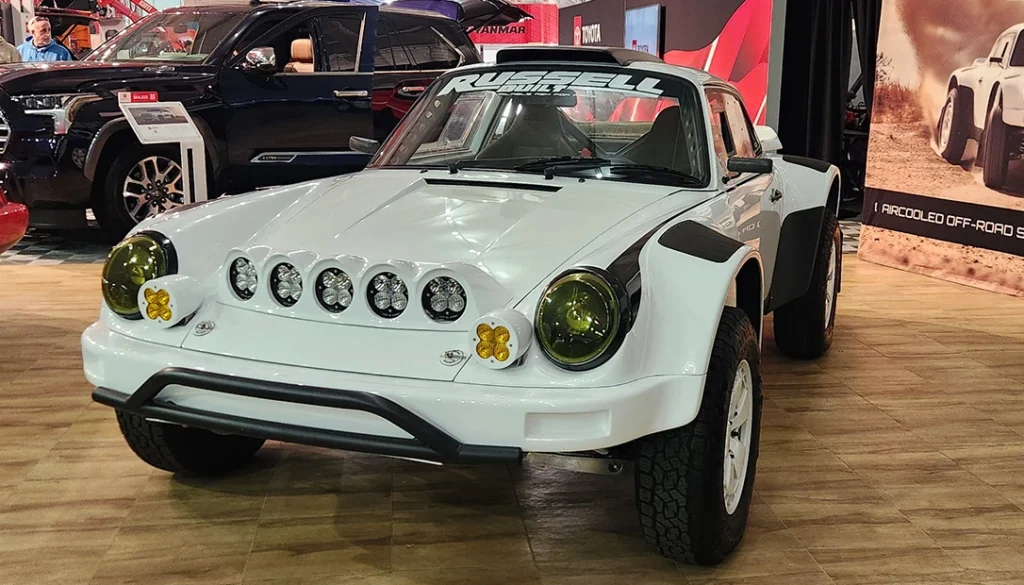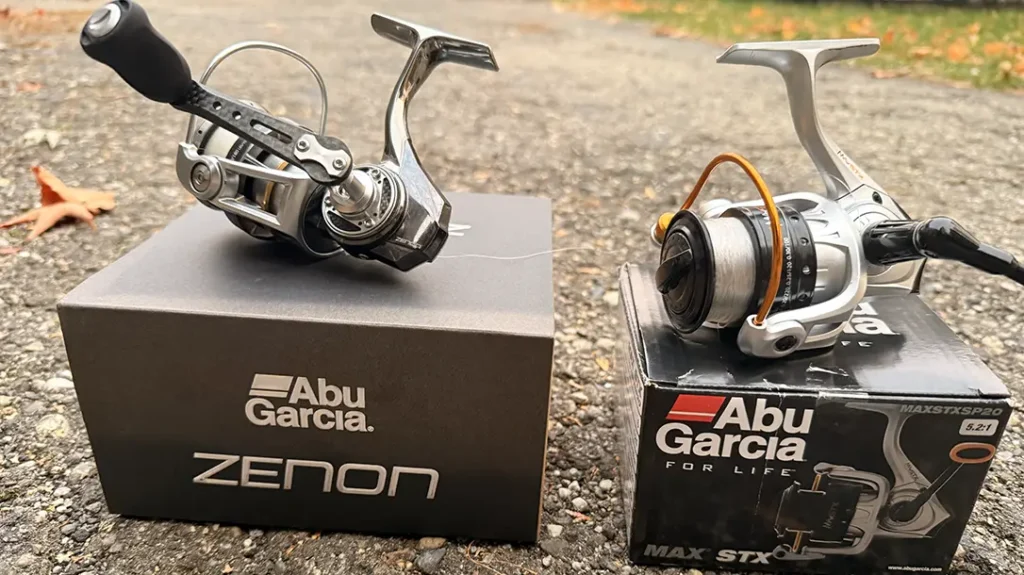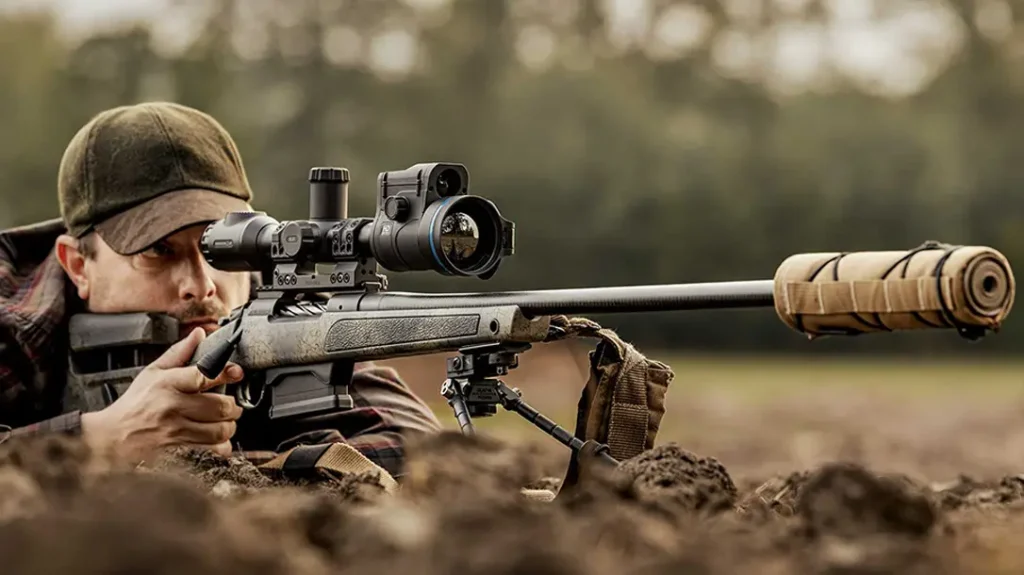Reports of a new “M16A5” have floated around the internet and at least one print publisher, but so far they have been unsubstantiated rumors. The Marine Corps ACMR (Armorer Conversion Marksman Rifle) has been billed as the A5, but as the name implies, it is really just a locally rebuilt A4. Officially, there isn’t a new rifle. Lots of people have their idea of what the A5 should look like. I personally think that ArmaLite has already built it.
Eugene Stoner’s AR-15 has become the longest-serving battle rifle in American history, and it is still going strong. To date, suggested replacements are little more than enhancements to a design that continues to dominate in precision-oriented “Across the Course” service rifle and speed-oriented 3-Gun competitions. Given the high level of refinement the AR-15 now enjoys, my bid for an ideal M16A5 would be to incorporate what we’ve learned about these rifles since the 1990s. That rifle should look like ArmaLite’s M-15TBN.
The M-15TBN is a compilation of features found in the best AR-15s. Take everything that made the AR-15 dominant in High Power competition and accurate to 600 yards, such as a full-diameter barrel with a .223 Wylde chamber, a two-stage trigger and a free-floated handguard to avoid point-of-impact shifts, and add an adjustable, yet rigid, stock that still supports good shooting positions. Keep the barrel short enough for fast handling characteristics without sacrificing ballistic performance and have Picatinny rails along the top and sides for mounting any sight and accessory needed. The M-15TBN is good enough to supplant the M16A4 Modular Weapon System (MWS), the M4 series and Squad Designated Marksman Rifles (SDM-Rs), incorporating the best features of each into one package.
Advertisement — Continue Reading Below
M16 History
AR-based service rifles remain the most commonly issued 5.56mm NATO rifles around the world, having been adopted by 15 countries in NATO and over 80 militaries total. As an employee of Fairchild Engine & Airplane, Stoner filed the original patent (2951424) on August 14, 1956. One of the goals of the design stated in the patent was to “provide a gas system which is lighter and less expensive to produce because of its simplicity than the present gas systems now used in automatic rifle mechanisms.” Stoner noted, “The most widely used method of operation of
automatic rifles today is the conventional gas cylinder, piston and actuating rod assembly… It is a principal object of this invention to utilize the basic parts of an automatic rifle mechanism such as the bolt and bolt carrier to perform a double function.”
While the primary function of the bolt carrier rotates, locks and reciprocates the bolt, it also serves as a movable cylinder to actuate the mechanism. The bolt serves as a stationary piston in addition to its role in locking the breech. This eliminates the need for a separate gas cylinder, piston and actuating rod assembly. Stoner’s system is best described as an internal piston design, with the older, more conventional design being external pistons. It isn’t “direct impingement.” In the patent filing, Stoner states, “This invention is a true expanding gas system instead of the conventional impinging gas system.” While designed to reduce parts and save weight, it also eliminates many causes of inaccuracy in self-loading designs. Stoner essentially created a straight-pull bolt action rifle that uses gas pressure to self-operate.
Advertisement — Continue Reading Below
Curtis LeMay viewed a demonstration of the new design in 1960. By 1961, the U.S. Air Force fielded 80,000 copies. The rest of the U.S. military began adopting the new rifle in 1962, with a halt to M14 production in 1963 and a U.S. Army order of 85,000 XM16E1s. There were several deficiencies with the M16 as implemented, largely due to ignoring key features made by Stoner and the lack of even minimal maintenance training that will keep any AR-15 at top reliability. Despite being nearly a half-century-old and having five major revisions to the originally issued version, Vietnam-era problems that have long been rectified are still circulated as flaws. This is like claiming personal computers will never catch on because the DEC PDP-7 ($72,000 in 1965) is too complex and expensive for individuals.
The Army standardized an upgrade of the XM16E1 as the M16A1 in 1967, and the M16A2 rifle entered service in the early 1980s, ordered in significant numbers by 1987. Features included a faster twist rate to stabilize NATO-approved, Belgian-designed SS109 (M855) ball ammo, a rear sight click-adjustable for windage and elevation, a heavier barrel and a case deflector built into the upper receiver. The full-auto firing mode was replaced with three-round burst, implemented via a cam that made an already mediocre trigger less consistent, as the pull weight differs as the cam rotates. The M16A3 rifle is an M16A2 rifle without the three-round-burst cam, like the M16A1 with semi-automatic and full-automatic fire. The M16A4 features a flattop upper receiver with a Picatinny rail, allowing various optics to be mounted.
The MIL-STD-1913 rail, standardized, tested and evaluated at Picatinny Arsenal in 1995, was based of the Weaver rail and originally intended for mounting optical sights on top of receivers. However, its versatility was quickly realized and catalogs of various accessories have been made available. The M5 Rail Adapter System (RAS) by Knight’s Armament Company was developed to expand the A4 into the MWS. The M5 is a non-free-floating handguard that is a drop-in replacement for the A2-type handguards originally issued with the A4. With four rails running the length of the forend, any number of accessories can be mounted.
Advertisement — Continue Reading Below
A Better M16
One of the stated goals in Stoner’s original patent was light weight. Using an efficient, parts-saving design coupled with 7075 aluminum alloy and plastics, early full-length AR-15s were about 6.5 pounds without a magazine or sling—the same weight as the current M4. Every revision since has bumped the weight up. The M16A2/A3/A4 is a pound heavier. A Trijicon ACOG with its mount weighs 0.9 pounds. Even after removing the rear iron sight, a standard M16A4 with an ACOG weighs 8 pounds. The M5 RAS adds more weight; the as-issued, ACOG-sighted M16A4 MWS tips the scales at 8.9 pounds. Adding features and performance also adds weight.
If our “light” assault rifle now tips the scales at nearly 9 pounds, we might as well get the best possible performance from it. Some of the important features in National Match ARs are full-diameter barrels and free-floating forends. Since the A2, M16 barrels have been turned thinner inside to save weight and maintain compatibility with the under-barrel M203 grenade launcher. National Match rifles need 1-MOA performance out to 600 yards while remaining accurate at that distance during rapid fire, as in the Infantry Trophy Team (“rattle battle”) Match.
Advertisement — Continue Reading Below
Just as critical is a handguard that doesn’t contact the barrel. Annoyingly, people complaining about the M16 series rarely mention this problem. Of course, you’d have to be a competent marksman to notice. Using optically sighted, rack-grade M16s in competition will quickly teach you that zeroing is mostly a wistful notion if any contact with the handguard is made. While it’s not enough to cause complete misses on silhouette targets out to 300 meters or so, it definitely hinders a skilled rifle shot.
Gun Details
To nobody’s surprise, ArmaLite can build a great AR-15. The M-15TBN’s enhancements begin with an adjustable B5 Systems stock, fitting issued receiver extensions (buffer tube) but with a better comb for a surer cheekweld, a non-slip, cushioned buttpad and a quick-detach sling swivel. This is more rigid than the issued M4 stock and makes for a great mount. The trigger is a two-stage unit reminiscent of those in Across the Course rifles, but it’s also suitable for tactical use. It breaks cleanly and only slightly heavier than the match-grade equivalent.
Advertisement — Continue Reading Below
With an ACOG mounted, the M-15TBN weighs in at 8.96 pounds, a scant ounce more than the current M16A4 MWS with all the same features. What’s more, the M-15TBN more than doubles the raw precision to National Match standards and eliminates any point-of-impact shifts with shots touched off by a crisp, two-stage trigger. To achieve this weight, ArmaLite went with an 18-inch barrel. Many consider this length the best compromise between size and velocity. M855 ammunition peaks in 20-inch tubes at about 3,050 fps, with a velocity drop off in longer barrels. With an 18-inch barrel, M855 ammo loses a negligible 15 to 20 fps; however, M855 ammo exits the 14.5-inch M4 barrel at around 2,860 fps—a loss of about 200 fps. Switching to superior 77-grain bullet loadings, such as the Mk262, the velocity difference from 20 to 18 inches is less than 50 fps (2,815 versus 2,770 fps) while a 14.5-inch barrel loses over 200 fps (2,576 fps).
ArmaLite gives its M-15TBN barrels .223 Wylde chambers, a hybrid of 5.56/.223 dimensions exploiting the accuracy advantages of the .223 with a throat that better accommodates longer and heavier bullets without pressure problems or compromising the functional reliability. It is a dominant choice in High Power for the best use of magazine-length, 77-grain loads with great accuracy.
The 5.56mm NATO is considered too light by some, prompting pushes for intermediate cartridges, with the 6.8 SPC being a popular alternative. Sure, 6.8 SPC rounds hit harder, but with good 77-grain 5.56mm loads, the advantage is less than many realize. Using 16-inch barrels and a 100-yard zero for both, a 115-grain 6.8 SPC bullet exits the barrel at 2,650 fps, with 3.5 inches of drop at 200 yards (now at 2,143 fps) and 35.4 inches of drop at 400 yards with a velocity of 1,677 fps and 718 foot-pounds of remaining energy. A 77-grain 5.56mm exits the barrel at 2,679 fps, drops 3.3 inches at 200 yards (at 2,216 fps) and is going 1,810 fps at 400 yards with 560 foot-pounds of energy. Out of an 18-inch barrel, 77-grainers start 100 fps faster, closing the gap even more.
Advertisement — Continue Reading Below
What’s more, the bigger 6.8 SPC means a 20 percent loss in capacity—24-round 6.8 SPC magazines are the same size as 30-round 5.56mm magazines—and the raw weight of those 24 rounds is higher. Worst of all would be the change over cost. With a unit-replacement cost of $586 for the M16A2 and over 2 million uniformed Department of Defense service members, new rifles alone (not counting the M249 or other light machine guns and automatic rifles) would cost over $1 billion dollars, not counting tool-up costs for a new type of ammo rendering old orders and supplies unusable. In contrast, going to the M-15TBN as the A5 with 77-grain ammunition could be done over time, with older rifles and ammunition remaining compatible. The M-15TBN shoots M855 and M193 extraordinarily well, and it shoots NATO ammunition that’s been in common use for several decades.
Range Time

To test the M-15TBN’s accuracy, I mounted a reliable SWFA SS 10x42mm scope and shot from a pedestal on a solid bench. To evaluate the rifle as a viable M16A5, I used currently issued ammo, including M855, M193 and a Service Rifle load from Black Hills contracted by the Army Marksmanship Unit consisting of a 77-grain Sierra MatchKing, the load that led to the Mk262 cartridge.
ArmaLite built the M-15TBN to the same specs as its National Match rifles, and it showed. With 77-grain Sierra MatchKings, the M-15TBN averaged under 1 MOA, with only one group a sixteenth of an inch over, skewing the results. I proudly admit to not being a benchrest shooter and readily agree that the wider shots were on me, not the rifle. The current-issue ball ammo, not known for great precision, also shot well. My worst group of the day with ammo the M-15TBN disliked the most was still considerably better than the best group my M16A4 has ever shot from a machine rest. At the same weight, the M-15TBN has at least double the accuracy. Always critical in a field rifle, the M-15TBN functioned flawlessly with all of the ammo.
The USMC ACMR conversion costs $1,200, not counting the cost of the complete M16A4 it is derived from. ArmaLite lists the MSRP of a complete M-15TBN at $1,449. Street price, to say nothing of a mass, government-contract order, is less. ArmaLite’s M-15TBN represents the next best step in the evolution of the AR-15. If this isn’t the face of the new M16A5, it should look damn similar.
For more information, visit armalite.com or call 800-336-0184.






























